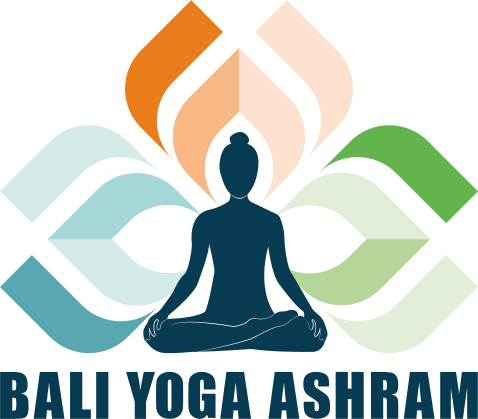
Pranayama is the science of conscious breathing. The word pranayama consists of two words- prana, meaning life force, and ayama, meaning expansion. When understood in this sense, Pranayama extends the life force energy within the body. Pranayama can also be broken down into prana and yama– yama means restriction. When we practice breath control through retention- it becomes pranayama.
Prana
Prana is the vital life force that creates and nourishes the human body at all levels—physical, astral, and causal. The energy form is the foundation of health, wellness, and spiritual evolution. A free flow of prana is vital for the proper functioning of body, mind, and spirit.
Pancha Prana
- Sthoola vayu: This is the pranic force predominant in the thoracic area. Sthoola Vayu is an upward-moving force that precedes the functions of respiration and circulation. It is also associated with the Anahata chakra.
- Apana Vayu: Apana vayu is the downward moving force in the pelvic area. It is responsible for the functions of reproduction and excretion associated with the mooladhara chakra.
- Samana Vayu: Samana Vayu is the balancing force between the school vayu and apana vayu, moving sideways. It resides in the abdominal area, influencing the gut. Manipura chakra is affected by this prana.
- Udana Vayu: This prana is dominant in the limbs and head. It moves upwards and outwards, influencing coordination and sense perception. It is associated with the vishuddhi chakra.
- Vyana Vayu: Vyana vayu is the pranic force that influences and supports the function of all other vayu. It is responsible for metabolism, coordination, and various other vital functions. Its chakra association is the Swadhistana chakra.
Nadis
The channels that conduct prana are known as nadis. These subtle networks carry energy and vitality throughout the body.
- Ida nadi: Ida nadi is lunar energy, predominant on the left side of the body. It is stimulated through the left nostril and influences the mind and its activities.
- Pingala nadi: Pingala nadi is solar energy that operates on the right side of the body. Breathing through the right nostril stimulates this nadi, affecting physical health.
- Sushumna nadi: Most of us have a dormant Sushumna nadi. It is activated only when the ida and pingala nadi are balanced. Practising nadi shodhan can help balance the nadis and activate the Sushumna nadi. This is the pathway of kundalini awakening.
Proper pranayama is believed to begin when ida and pingala nadis are balanced, and the pranic flow enters the Sushumna channel.
Types of pranayama
- Heating pranayama: These techniques bring heat and vitality to the system. They help treat physical conditions like chronic pain, respiratory disorders, and hormonal imbalances. Examples of heating pranayama are surya bheda, kapalbhati, and bhastrika.
- Cooling pranayama: As the name suggests, cooling pranayama cools down the body, restoring balance when there is excess heat. These pranayamas are beneficial to counter hyperactivity, both physically and mentally. Chandra bheda, sheetali, and sheetkari are popular cooling pranayamas.
- Balancing pranayama: Balancing pranayama is one of the most beginner-friendly breathwork practices you can include in your routine. It works to balance the various forces in the body, such as the left and right sides, heat and cold, etc. Nadi Shodhan is a balancing pranayama.
- Tranquilising pranayama: This subtype brings a calming, relaxing effect to the body. It can be practised to calm the mind and enter a flow state. Ujjayi and Bhramari are examples of tranquilising pranayama.
Benefits of pranayama
- Harmonises the five vayus: Practicing pranayama can help balance the opposing forces of the five vayus, allowing them to work together harmoniously. Holistic health depends on all systems coordinating with each other with the least resistance. Pranayama helps achieve this by manipulating and expanding the prana to all body parts. With eventual practice, the four pranas merge into the vyana, operating as a united force.
- Removes blockages in nadis: Blockages in nadis result in illness, disease, or mental disturbances. These blockages can be due to genetic predisposition, environment, conditioning, and lifestyle. The practice of conscious breathwork removes these blockages from the pranic field and opens the energy networks. An awakened state of mind and vitality of the body is achieved.
- Strengthens diaphragm: Pranayama builds lung capacity and trains the diaphragm to handle high stress. Even though pranayama is practised after asanas, according to Ashtanga yoga, many practices strengthen the lungs for better endurance during physical exercise. It also helps improve carbon dioxide tolerance levels so people can comfortably breathe under discomfort.
- Reduces stress: When practised consistently, pranayama can reduce cortisol levels. Increased oxygenation to the brain is one reason for that. Pranayama also improves prana quality, allowing for better nervous system regulation, activating various parts of the brain, and healthy hormonal function. Instead of viewing everything as a threat, your nervous system can switch to the parasympathetic mode.
- Increases digestive fire: According to Ayurveda, digestive fire is essential to overall well-being. Science now has studies that prove the mind-gut connection, deeming the gut our second brain. Proper digestion and a balanced gut microbiome are crucial in eliminating toxins and stabilising mood. Heating pranayamas like kapalbhati and bhastrika massage the abdominals and strengthen them, while cooling pranayamas like sheetali and sheetkari balance excess acidity.
- Removes phlegm: Pranayama has a strong effect on the respiratory system, being very useful for chronic respiratory problems like phlegm, cough, asthma, shortness of breath, etc. Forceful breathwork practices like bhastrika are excellent for clearing the nasal cavity and trachea, even reaching the lungs. It has also been proven that consistent practice of kapalbhati improves symptoms of chronic cough.
- Better cognitive function: Our breath is intimately connected to brain function. Pranayama increases oxygen circulation to the brain, helping with better cognitive abilities. Allowing a free flow of prana throughout the body helps improve brain function by improving the gut, coordination, and sense perception. Conscious breathing also benefits memory, attention, focus, and concentration.
- Pranayama prepares one for spiritual evolution: Pranayama, especially with retention and purification, is a decisive step in spiritual growth. One can access the dormant cosmic energy within us- kundalini- and awaken it to achieve samadhi or liberation. Pranayama helps withdraw the senses and take attention inward. It prepares one for concentration and meditation. The benefits of pranayama aren’t purely therapeutic, but they can allow you to access higher dimensions.
Pranayama is a powerful yogic tool that should be practised with discipline and devotion. Paired with asanas, proper diet, and healthy habits, it can transform your life. Begin slowly, at a comfortable pace, and slowly progress to advanced levels with awareness and caution.

